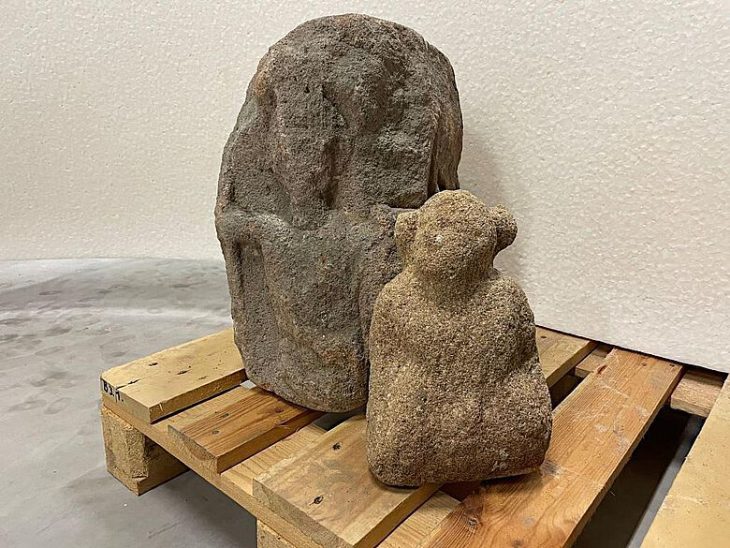A remarkable discovery has emerged from ongoing excavations at the Roman fort in Stuttgart, Germany. Amidst the ancient ruins, archaeologists unearthed a stone sculpture depicting a snake-bodied Roman-German deity, shedding light on the rich cultural tapestry of the region’s past.
The excavation efforts, overseen by the State Office for Monument Preservation (LAD) at the Stuttgart Regional Council, have been underway since the beginning of the year at the Roman fort on Altenburger Steige in Stuttgart-Bad Cannstatt. The site, originally housing a fort for an equestrian unit during Roman times (circa 100-150 AD), later evolved into an extensive civilian settlement until approximately 260 AD.
The newfound treasure, a 30-centimeter tall kneeling figure with a human head and a serpent-like lower body, was discovered by an employee of ArchaeoBW amidst the excavations. Despite the weathering of time, the intricacies of the sculpture remain visible, showcasing the figure’s arms resting on its upper body and hands placed on its hips and snake-like lower extremities.
Dr. Andreas Thiel, the chief archaeologist of LAD, elucidated the significance of the discovery, identifying the figure as a hybrid creature from the Roman-Germanic pantheon known as a ‘giant.’ These giants were often depicted in Jupiter-Giant columns, blending elements of classical antiquity with Germanic beliefs. Thiel explained, “The thunderbolt-wielding Jupiter rides his horse over a crouching figure on the ground, usually naked and bearded, as can be seen in a group from Hausen an der Zaber, in the Heilbronn district.”

The archaeological find not only enriches our understanding of ancient beliefs but also contributes to reconstructing a Jupiter giant column that once graced the Roman settlement of Bad Cannstatt. Dr. Astrid Fendt, Head of the Department of Archaeology at the Württemberg State Museum, noted the synchronicity of the discovery with an existing fragment stored in the museum’s depot—a four-god stone featuring depictions of Roman deities Mercury, Juno, Hercules, and Minerva.
This serendipitous connection allows experts to piece together fragments of Stuttgart’s Roman past, envisioning the grandeur of a bygone era through artifacts like the recently discovered snake-bodied deity sculpture. As each archaeological find emerges, it adds another layer to the intricate mosaic of history, preserving and celebrating the cultural heritage embedded within Stuttgart’s ancient landscapes.
